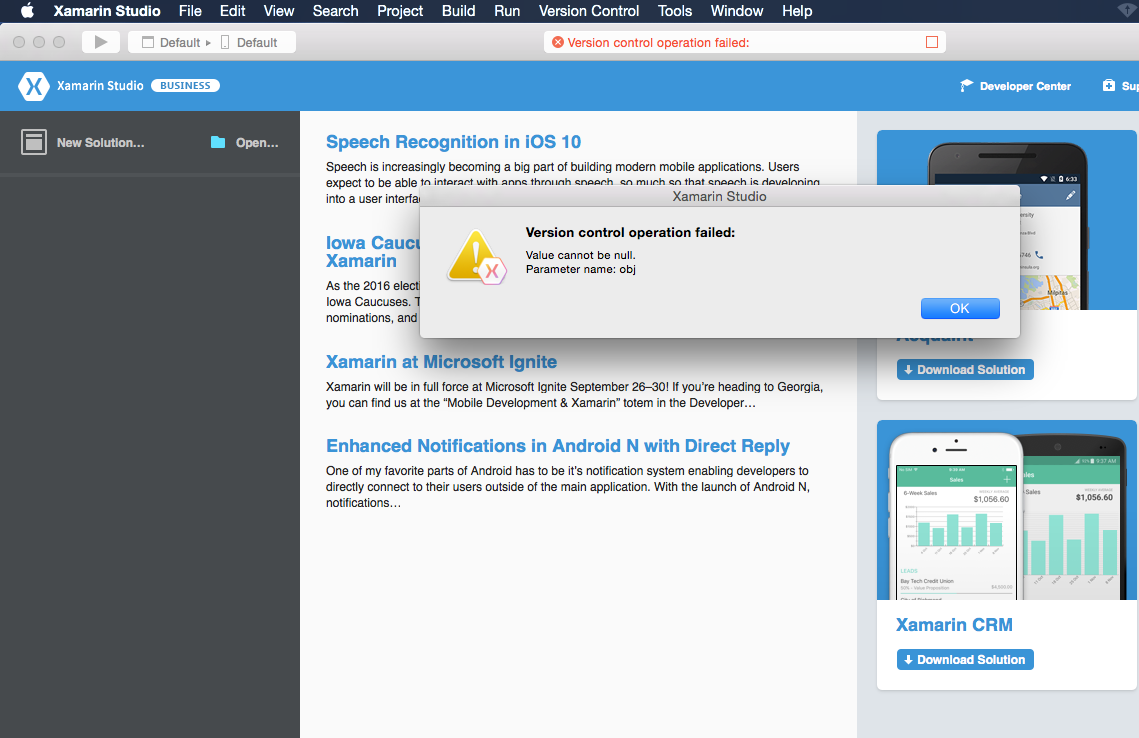

We reduced the time to enable IntelliSense for large.We made numerous updates to F# and its tools, with a focus on performance.We improved solution load time for C# and VB projects.C# 7.3 is included in Visual Studio version 15.7.
#XAMARIN STUDIO 6.2 UPDATE#
The update dialog provides you even more details about your update during installation.You can Save All your pending changes before you start your update.We added support to change installation locations.If you are new to step debuggers, read the excellent tutorial for Visual Studio Code, which explains everything visually.As usual let’s see the release note from the Visual Studio website. When debugging, you can uncheck the "Everything" breakpoint and explicitly set breakpoints in your code. It's then up to you to inspect the current variables, step over the code, step into the code. By default, everything is a breakpoint, so execution stops at the first instruction. If you go to the browser and refresh, the IDE should automatically take the focus, meaning that the debugging session is ready.
#XAMARIN STUDIO 6.2 CODE#
Each profile will tell you a bit more about how Symfony works, which class/methods are called, what is expensive to run and what is cheap.įrom Visual Studio Code and while being in your project directory, go to the debugger and click on the green play button labelled "Listen for Xdebug": Some interesting experiments: profile an error page, profile the / page (which is a redirect), or an API resource. This is why you should always profile with the production environment, even locally. The development environment is slower as the Symfony profiler tries to gather many data to ease debugging problems. Under the ConferenceController::index() call, notice the SubRequestHandler::handle() method that renders the ESI (that's why we have two calls to Profiler::saveProfile(), one for the main request and one for the ESI).Įxplore the timeline to learn more switch to the call graph view to have a different representation of the same data.Īs we have just discovered, the code executed in development and production is quite different.The TerminateEvent, which was not visible in production, takes a large percentage of the execution time looking closer, you can see that this is the event responsible for storing the Symfony profiler data gathered during the request.You can immediately see that the profile looks very different: As the page is in the cache, HttpCache\Store::restoreResponse() is getting the HTTP response from its cache and the controller is never called.ĭisable the cache layer in public/index.php as we did in the previous step and try again. You should be redirected to the call graph view as the request was really quick and the timeline would be quite empty:ĭo you understand what's going on? The HTTP cache is enabled and as such, we are profiling the Symfony HTTP cache layer. Now, profile the same page from the local machine in the development environment:ġ $ blackfire curl `symfony var: export SYMFONY_PROJECT_DEFAULT_ROUTE_URL`en/ The timeline is a great way to understand how some code works which is very useful when you get a project developed by someone else.





 0 kommentar(er)
0 kommentar(er)
